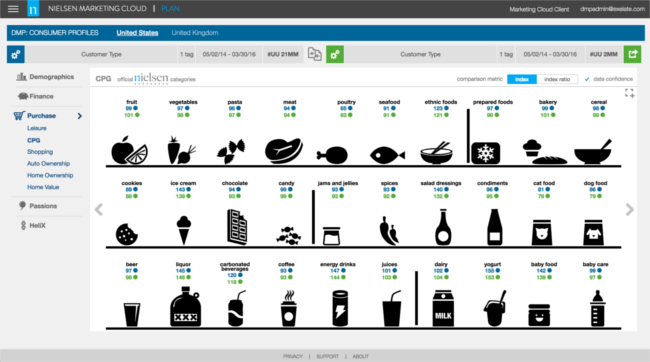-->
Download the Remote Update file from DMP Dealer Direct Software Downloads. On the client computer, double click on the LinkUpdate.exe file to run the automatic extraction utility. When prompted where to install, choose the directory where Remote or System Link is currently installed (Ex: C:Link) When setup is complete, the client computer is. A DMP is a kind of data warehouse that sorts and stores information that is subsequently used by marketers and advertisers. Data Management Platforms are one component of what is often referred to as 'Ad Tech' or digital advertising technology.
This article describes how to examine a small memory dump file. A small memory dump file can help you determine why your computer crashed.
Applies to: Windows 10 - all editions, Windows Server 2012 R2
Original KB number: 315263
Note
If you are looking for debug information for Windows 8 or later, please check Debugging Tools for Windows (WinDbg, KD, CDB, NTSD).For more information about small memory dump, please check Small Memory Dump.
Small memory dump files
If your computer crashes, how can you find out what happened, fix the issue and it prevent it from happening again? You may find the small memory dump file useful in this situation. The small memory dump file contains the smallest amount of useful information that could help you identify why your computer crashed. The memory dump file contains the following information:
- The Stop message, its parameters, and other data
- A list of loaded drivers
- The processor context (PRCB) for the processor that stopped
- The process information and kernel context (EPROCESS) for the process that stopped
- The process information and kernel context (ETHREAD) for the thread that stopped
- The Kernel-mode call stack for the thread that stopped
To create a memory dump file, Windows requires a paging file on the boot volume that is at least 2 megabytes (MB) in size. On computers that are running Microsoft Windows 2000, or a later version of Windows, a new memory dump file is created each time that a computer crash may occur. A history of these files is stored in a folder. If a second problem occurs and if Windows creates a second small memory dump file, Windows preserves the previous file. Windows gives each file a distinct, date-encoded file name. For example, Mini022900-01.dmp is the first memory dump file that was generated on February 29, 2000. Windows keeps a list of all the small memory dump files in the %SystemRoot%Minidump folder.
The small memory dump file can be useful when hard disk space is limited. However, because of the limited information that is included, errors that were not directly caused by the thread that was running at the time of the problem may not be discovered by an analysis of this file.
Configure the dump type
To configure startup and recovery options to use the small memory dump file, follow these steps.
Note
Because there are several versions of Microsoft Windows, the following steps may be different on your computer. If they are, see your product documentation to complete these steps.
Click Start, and then click Control Panel.
Double-click System, and then click Advanced system settings.
Click the Advanced tab, and then click Settings under Startup and Recovery.
In the Write debugging information list, click Small memory dump (64k).
To change the folder location for the small memory dump files, type a new path in the Dump File box or in the Small dump directory box, depending on your version of Windows).
Tools to read the small memory dump file
Use the Dump Check Utility (Dumpchk.exe) to read a memory dump file or verify that the file has been created correctly.
Note
The Dump Check Utility does not require access to debugging symbols. Symbol files hold a variety of data which are not actually needed when running the binaries, but which could be very useful in the debugging process.
For more information about how to use Dump Check Utility in Windows NT, Windows 2000, Windows Server 2003 or Windows Server 2008, see Microsoft Knowledge Base article 156280: How to Use Dumpchk.exe to check a memory dump file.
For more information about how to use Dump Check Utility in Windows XP, Windows Vista or Windows 7, see Microsoft Knowledge Base article 315271: How to use Dumpchk.exe to check a Memory Dump file.
Or, you can use the Windows Debugger (WinDbg.exe) tool or the Kernel Debugger (KD.exe) tool to read small memory dump files. WinDbg and KD.exe are included with the latest version of the Debugging Tools for Windows package.
To install the debugging tools, see the Download and Install Debugging Tools for Windows webpage. Select the Typical installation. By default, the installer installs the debugging tools in the following folder:
C:Program FilesDebugging Tools for Windows
Dmp Software Downloads
This Web page also provides access to the downloadable symbol packages for Windows. For more information about Windows symbols, see Debugging with Symbols, and the Download Windows Symbol Packages webpage.
For more information about dump file options in Windows, see Overview of memory dump file options for Windows.
Open the dump file
To open the dump file after the installation is complete, follow these steps:
Click Start, click Run, type
cmd, and then click OK.Change to the Debugging Tools for Windows folder. To do this, type the following at the command prompt, and then press ENTER:
To load the dump file into a debugger, type one of the following commands, and then press ENTER:
or
The following table explains the use of the placeholders that are used in these commands.
| Placeholder | Explanation |
|---|---|
| SymbolPath | Either the local path where the symbol files have been downloaded or the symbol server path, including a cache folder. Because a small memory dump file contains limited information, the actual binary files must be loaded together with the symbols for the dump file to be correctly read. |
| ImagePath | The path of these files. The files are contained in the I386 folder on the Windows XP CD-ROM. For example, the path may be C:WindowsI386. |
| DumpFilePath | The path and file name for the dump file that you are examining. |
Sample commands
You can use the following sample commands to open the dump file. These commands assume the following:
- The contents of the I386 folder on the Windows CD-ROM are copied to the
C:WindowsI386folder. - Your dump file is named
C:WindowsMinidumpMinidump.dmp.

Sample 1:
Sample 2. If you prefer the graphical version of the debugger instead of the command-line version, type the following command instead:
Examine the dump file

There are several commands that you can use to gather information in the dump file, including the following commands:
- The
!analyze -showcommand displays the Stop error code and its parameters. The Stop error code is also known as the bug check code. - The
!analyze -vcommand displays verbose output. - The
lm N Tcommand lists the specified loaded modules. The output includes the status and the path of the module.
Note
The !drivers extension command displays a list of all drivers that are loaded on the destination computer, together with summary information about their memory use. The !drivers extension is obsolete in Windows XP and later. To display information about loaded drivers and other modules, use the lm command. The lm N T command displays information in a format that is similar to the old !drivers extension.
For help with other commands and for complete command syntax, see the debugging tools Help documentation. The debugging tools Help documentation can be found in the following location:
C:Program FilesDebugging Tools for WindowsDebugger.chm
Note
If you have symbol-related issues, use the Symchk utility to verify that the correct symbols are loaded correctly. For more information about how to use Symchk, see Debugging with Symbols.
Simplify the commands by using a batch file
After you identify the command that you must have to load memory dumps, you can create a batch file to examine a dump file. For example, create a batch file and name it Dump.bat. Save it in the folder where the debugging tools are installed. Type the following text in the batch file:

When you want to examine a dump file, type the following command to pass the dump file path to the batch file:
Dmp Software Update
Download Digiday’s complete WTF Programmatic guide,including 11 explainers detailing the ins and outs of programmatic advertising.
Data now informs almost all aspects of digital media, and data management platforms have emerged to help marketers, publishers and other businesses make sense of it all. Here’s a primer — in as plain English as possible — on what DMPs are, and what they actually do:
Extron Dmp Software
What is a data management platform ?
In simple terms, a data management platform is a data warehouse. It’s a piece of software that sucks up, sorts and houses information, and spits it out in a way that’s useful for marketers, publishers and other businesses.
This sounds like a database. Is it more?
In theory, DMPs can be used to house and manage any form of information, but for marketers, they’re most often used to manage cookie IDs and to generate audience segments, which are subsequently used to target specific users with online ads. With the rise of ad tech, advertisers now buy media across a huge range of different sites and through various middlemen, including DSPs, ad networks and exchanges. DMPs can help tie all that activity and resulting campaign and audience data together in one, centralized location and use it to help optimize future media buys and ad creative. It’s all about better understanding customer information.

Got it. But this sounds a lot like what a DSP does.
A DMP is used to store and analyze data, while a DSP is used to actually buy advertising based on that information. Information is fed from a marketer’s DMP to its DSP to help inform ad buying decisions, but without being linked to another technology, a DMP can’t actually do much. On the publisher side, DMPs can also be linked to supply-side platforms and other technologies that can help them sell their ads for more. In those cases, the DMP is storing publisher information on its readers.
They still sound similar. Why are DSPs and DMPs separate, then?
Have you seen the Lumascape? But that’s for a “WTF Are VCs Doing?” feature. Like many areas in advertising technology, the lines between DMPs and DSPs are beginning to blur. A growing number of DSP providers now offer their clients DMP technology too. Those companies say it’s easier and more efficient for marketers to use one platform instead of two. The counter to that argument is that standalone DMPs make marketers’ data more portable, making it easier to feed into a wide range of DSPs.
Who uses DMPs?
Agencies, publishers and marketers all use DMPs. Agencies use the technology to collect and analyze the data collected from their client campaigns, which is sometimes pooled across multiple clients to create vast and rich datasets. In an attempt to take closer control of their data, some clients have begun licensing their own DMP technologies and managing those platform themselves. Meanwhile, a growing number of publishers are also making use of the technology as a way to help them better understand their reader information and extract more value from it as a result. Think of how The Wall Street Journal’s user information is valuable for an financial-services ad campaign targeting high-net-worth individuals.
Dmp Software
What are the major DMPs?
Vendors that sell DMP technology to the digital media world currently include Adobe, Krux, Lotame, Aggregate Knowledge, BlueKai, CoreAudience, Knotice, nPario and X+1. Some of those providers also offer DSP technology.